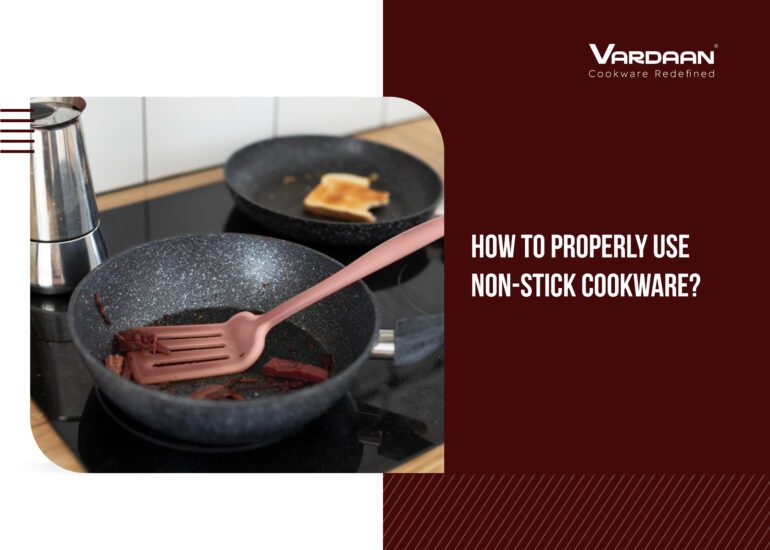When it comes to cookware, stainless steel is a popular choice among home cooks and professional chefs alike. Known for its durability, versatility, and even heat distribution, stainless steel cookware is a staple in many kitchens. However, cooking with stainless steel requires a slightly different approach compared to other types of cookware. To help you make the most out of your stainless steel pans and pots and maximize the flavor in your dishes, we’ve compiled a list of cooking techniques and tips that will elevate your culinary skills.

1. Preheat your stainless steel cookware: Before you start cooking, it’s important to preheat your stainless steel pan or pot. This allows for even heat distribution and prevents food from sticking to the surface. Place the empty pan on medium heat for a few minutes until it becomes hot. You can test the temperature by sprinkling a few drops of water on the surface. If the water evaporates immediately, the pan is ready for cooking.
2. Use oil or fat: To prevent food from sticking to your stainless steel cookware, it’s crucial to use an adequate amount of oil or fat. Choose oils with a high smoke point, such as canola, vegetable, or grapeseed oil. Heat the oil in the preheated pan before adding your ingredients. Tilt the pan to coat the surface evenly, or use a brush to spread the oil. This creates a protective layer and helps in achieving a beautiful sear and flavorful crust.
3. Monitor the heat: Stainless steel cookware heats up quickly, so it’s essential to keep an eye on the heat level. High heat can cause food to stick, burn, or cook unevenly. Start cooking on medium heat and adjust as needed. If you’re unsure, it’s better to err on the side of lower heat and gradually increase it if necessary. This allows you to have more control over the cooking process and avoid burning your ingredients.
4. Properly brown your ingredients: Stainless steel cookware is excellent for achieving a deep, golden brown crust on meats, fish, and vegetables. To achieve this, make sure your ingredients are dry before placing them in the pan. Moisture can interfere with the browning process. Spread the ingredients evenly in the pan, leaving enough space between them for proper browning. Avoid overcrowding the pan, as this can cause steaming instead of browning. Let the ingredients sit undisturbed for a few minutes to develop a flavorful crust before flipping or stirring.
5. Deglaze for flavor: When cooking with stainless steel, don’t forget to take advantage of the fond, which is the browned bits that stick to the bottom of the pan. These bits are packed with flavor and can be easily incorporated into your dish. To deglaze the pan, add a liquid such as wine, stock, or broth while the pan is still hot. Scrape the bottom with a wooden spoon or spatula to release the flavorful bits. This creates a delicious sauce or base for your dish, adding depth and complexity to the flavors.
6. Use the right utensils: Stainless steel cookware is durable, but it’s essential to use the right utensils to avoid scratching the surface. Opt for non-abrasive utensils, such as wooden or silicone spatulas, tongs, or stainless steel utensils. Avoid using metal utensils with sharp edges that can damage the surface of your cookware.
7. Clean and care for your stainless steel cookware: Proper maintenance is key to keeping your stainless steel cookware in top condition. After cooking, allow the cookware to cool before cleaning. Use warm soapy water and a soft sponge or cloth to clean the stainless steel surface. Avoid using abrasive cleaners or scrubbers that can scratch the cookware. If there are stuck-on food particles, you can use a mixture of baking soda and water to create a gentle scrub. Rinse thoroughly and dry the cookware with a soft towel to prevent water spots or stains.
To maintain the shine and luster of your stainless steel cookware, you can use specialized stainless steel cleaners or polishes. These products help remove stubborn stains, restore shine, and provide a protective layer against future stains. Follow the manufacturer’s instructions when using these products and always test them on a small, inconspicuous area first.
In conclusion, cooking with stainless steel cookware can elevate your culinary experience and help maximize the flavor of your dishes. By following these cooking techniques and tips, you can achieve a beautiful sear, even heat distribution, and enhance the flavors of your ingredients. Remember to preheat the cookware, use enough oil or fat, monitor the heat level, properly brown your ingredients, and take advantage of the fond for added flavor. Additionally, using the right utensils and properly caring for your stainless steel cookware will ensure its longevity and performance.
Investing in high-quality stainless steel cookware is a wise choice for any cooking enthusiast. The versatility, durability, and aesthetic appeal of stainless steel make it a valuable addition to your kitchen arsenal. Whether you’re searing a steak, sautéing vegetables, or making sauces, stainless steel cookware can help you achieve professional-level results.
To explore a range of stainless steel cookware options, you can visit reputable cookware retailers or check online platforms that offer a variety of brands and styles. Consider factors such as the quality of the stainless steel, the construction of the cookware, and the reputation of the manufacturer when making your purchase.
By mastering the art of cooking with stainless steel, you’ll be able to unleash your creativity in the kitchen and enjoy flavorful and delicious meals. So, grab your stainless steel pans, apply these techniques, and let the flavors shine through in your cooking.




